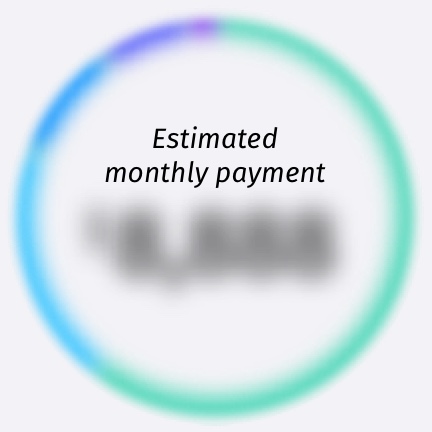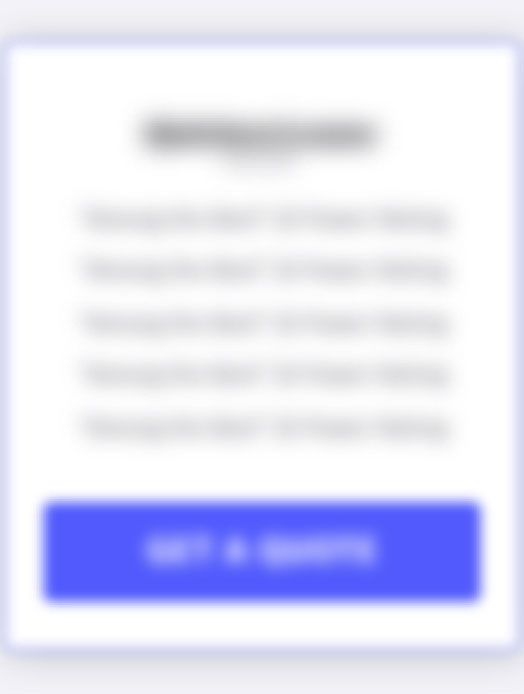Don't Have 20% for a Down Payment? Here's How to Buy a Home With Less

Mason and Taylor Miranda desperately wanted to buy a house before starting a family. Their apartment was small, it was in an unsafe area, and it just wasn’t a suitable place to welcome their first child.
The only problem? A 20% down payment was way out of reach for the couple. In fact, according to Mason, even a medium-sized down payment would have put them “in a financial pickle.”
“We wouldn’t have much left in the bank for any emergencies or other expenses,” says Mason, a 24-year-old credit industry specialist.
Fortunately, the Mirandas’ lender—M&T Bank—pointed the couple toward an FHA loan, and in June, they bought a $135,000 home in Cicero, New York, with just $5,000 down. It also helped them keep a financial cushion.
“Our home didn't have appliances when we first bought it,” Mason notes. “The FHA loan allowed us to be able to afford the appliances and fixes immediately with some leftover funds for any other potential problems that popped up.”
The Mirandas’ story is a common one. According to a study from the Urban Institute, more than two-thirds of renters say the down payment is their biggest barrier to homeownership.
Throw in COVID-19 and the economic havoc it has wrought, and the hurdle is now even more insurmountable for many Americans. A recent analysis from Realtor.com even shows the pandemic could delay the average Millennial’s homeownership goals by as much as 53 months—even with aggressive savings efforts.
How big a down payment do I really need?
If waiting almost five-years sounds crazy, a low-down-payment program like the Mirandas used might be the answer. Despite the pandemic and the financial risks it poses, many banks and other lenders are still offering loan programs with minimal down payment requirements—ranging from 3% to 10%, typically. Some require no down payment at all.
Many of these loan programs disappeared after the financial crisis more than a decade ago, but lenders and government agencies have been easing back into these offerings for some time.
For example, Alliant Credit Union’s Advantage Mortgage is one option for buyers without much saved up. The program requires zero down payment, allows for loans up to $500,000, and there’s no mortgage insurance required.
That last detail is important for borrowers considering low- or no-down-payment options.
Though government-backed FHA loans, like the Mirandas’, technically allow for down payments as low as 3.5%, they also require costly mortgage insurance—a policy that protects the lender—both at closing and as part of the monthly payment for the life of the loan. If a buyer puts down less than 20%, most private loans require mortgage insurance, too—though it's cancelable once they've paid down a certain portion of the loan. The exact price of this insurance varies, but according to mortgage purchaser Freddie Mac, it typically costs between $30 and $70 per month for every $100,000 that’s borrowed.
How do I qualify for a low down payment loan?
Programs like Alliant’s don’t require mortgage insurance—or the costs that come with it. What they do require, though? That’d be a high credit score and more cash in the bank.
According to Jerrold Anderson, vice president of residential lending at Alliant, the down payment is just one of the many “standard risk factors” considered by a lender. The others include things like existing debt, credit history and cash reserves.
“If one of the factors is out of range, the other factors are reviewed to determine if they are strong enough to compensate for it,” says Anderson. “In the case of a low down payment, higher credit scores and higher reserves along with a lower debt-to-income ratio would be required to offset the higher risk associated with a low down payment.”
Outside of Alliant, there’s also the NASB Zero Down Home Loan, Bank of America’s Affordable Loan Solution, BBVA’s Home Ownership Made Easier loan and Navy Federal’s Homebuyers Choice loan to name a few. All require low (or no) down payments and have no mortgage insurance requirement.
Still many of these loans demand higher credit scores to account for the extra risk. NASB’s, for example, requires a 720 score. According to FICO, the average American’s credit score is just below that, at 706.
Government-backed FHA loans typically require just a 580 credit score to qualify for the minimal 3.5% down payment. But lenders have upped requirements on these as well. Flagstar, for example, currently asks for a 680 on all FHA loans. According to mortgage technology provider Ellie Mae, the average FICO score of FHA borrowers in June was 684. That’s up from 675 a year ago and the highest average score since early 2017. Some companies, like online lender Better.com, even stopped offering FHA loans altogether, citing economic uncertainty.
“We’re seeing this pullback in terms of the number of low-credit-score and high-loan-to-value products being offered,” says Joel Kan, head of economic and industry forecasting at the Mortgage Bankers Association. “Lenders certainly still have the typical FHA low-down-payment products available, it’s just that within that space, it’s tighter. There are higher requirements than pre-pandemic.”
Is down payment assistance available?
Low-down payment loans aren’t the only options for buyers who are light on savings. For many, down payment assistance programs can help. These programs can cover most or all of a qualifying buyer’s down payment and come in the form of grants or loans.
“Some down payment assistance programs do require that the funds be repaid, but not all,” says Miki Adams, executive vice president at CBC Mortgage Agency, which offers a number of assistance programs.
Though some DPA programs have been put on pause since the start of the pandemic only a small share of programs have been suspended. “Currently, about 81% of all programs are active, funded and available, and that’s certainly within the range of normal,” says Sean Moss, senior vice president at Down Payment Resource. “We’ve even seen new programs pop up in several markets in the last few months.”
Down payment assistance programs can also be a helpful way for buyers to stay competitive—particularly in today’s fast-moving, low-inventory market.
“If buyers have a down payment program—especially one that includes closing cost help—and don’t need the seller to help with closing costs, they can make more attractive offers than competing buyers,” explains Moss.
For handier consumers, “sweat equity” is another option. This one allows the buyer to pay their down payment via improvements to the property. For example, if their work increases the home’s value by 3%, they get credit for a 3% down payment—as long as an appraiser confirms the value.
According to Anna DeSimone, author of the book Housing Finance 2020, this an option on both conventional and government-backed mortgages, usually up to 10% of the after-repair value of the home. “Let’s say you find a home for sale at $150,000 that needs exterior painting and repairs that a contractor would charge $15,000 for,” she says. “If you can do the work yourself, your sweat equity would be treated as a 10% down payment.”
There is a catch, though: You’ll have to find a seller willing to let you work on the property before you’ve actually bought it. Once the renovations are complete and an appraiser has verified the value of the improvements, then your purchase can move forward.
The bottom line
The important thing for buyers to remember is that 20% down isn’t required to buy a home. And for those low on savings? There are plenty of options still available—pandemic or not.
“It’s surprising how many people still think that having a 20% down payment is still a necessity for homeownership,” says Derek Harman, a senior mortgage advisor with The Yi Team Mortgage, a mortgage lender based in Rockville, Maryland. “That is just not true. We are constantly doing loans with 3% to 10% down payments.”
More from Money:
Mortgage Rates Are at Record Lows. But What Does It Take to Actually Qualify for a 3% Loan?
With Mortgage Rates So Low, Getting a Floating Rate Mortgage Might Seem Crazy. Here's Why I Did It Anyway
Why a Rate Lock Makes Sense Right Now, Even with Mortgage Rates Falling



